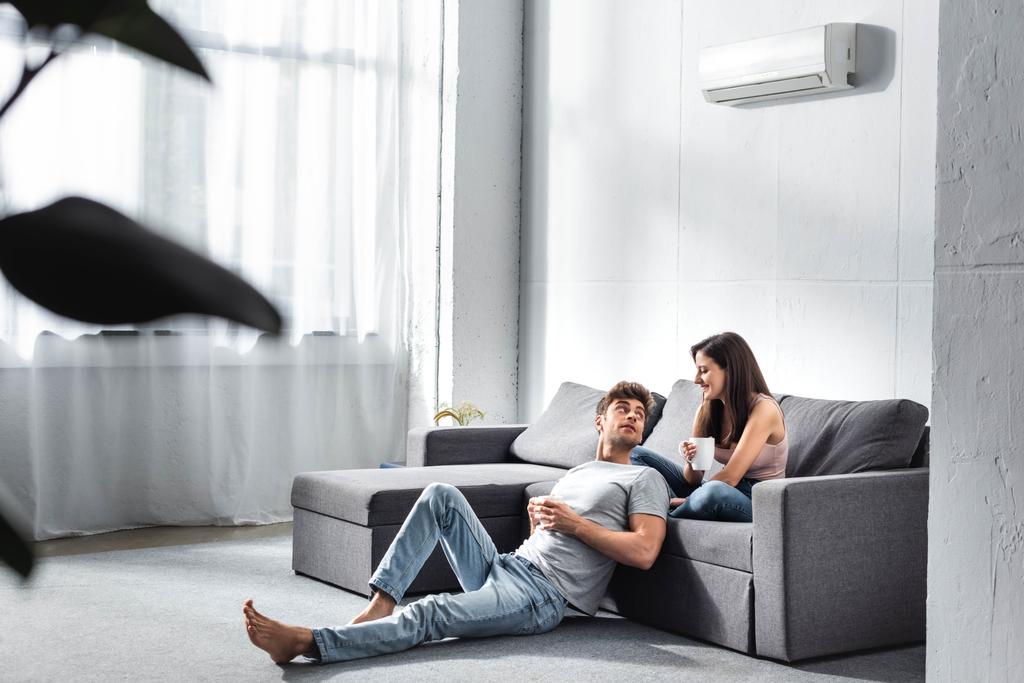
Building a new home is a journey filled with countless decisions that shape the comfort and functionality of your living space. Among these decisions, planning for optimal air conditioning efficiency is crucial. Efficient air conditioning not only ensures comfort but also contributes to lower energy bills and a more sustainable home. Here’s how you can plan your new home layout to maximise air conditioning efficiency.
Strategic Window Placement
Windows play a significant role in regulating the indoor temperature of your home. Proper window placement can reduce the need for excessive air conditioning, leading to better energy efficiency.
1. Orient Windows to Capture Breezes: Position windows to capture prevailing breezes, typically from the south and west in Melbourne. This natural ventilation can reduce the reliance on air conditioning, especially during cooler evenings.
2. Avoid West-Facing Windows: West-facing windows can cause significant heat gain in the afternoons. If they are unavoidable, consider using smaller windows or installing shading devices such as awnings, shutters, or external blinds to reduce heat gain.
3. Use Double-Glazed Windows: Double-glazed windows offer better insulation than single-glazed ones, reducing the amount of heat entering your home during summer and retaining warmth during winter.
Optimal Insulation
Insulation is a critical factor in maintaining a consistent indoor temperature. Proper insulation minimises the transfer of heat, reducing the burden on your air conditioning system.
1. Insulate Walls, Roof, and Floors: Ensure that your home’s walls, roof, and floors are well-insulated. This creates a thermal barrier that keeps heat out during summer and retains warmth during winter, enhancing overall energy efficiency.
2. Use Reflective Insulation: Reflective insulation, particularly in the roof space, can significantly reduce heat gain. It reflects radiant heat away from the home, keeping the interior cooler and reducing the need for air conditioning.
3. Seal Gaps and Cracks: Air leaks around doors, windows, and other openings can compromise insulation. Use weatherstripping and caulking to seal these gaps, preventing unwanted heat transfer and maintaining a comfortable indoor environment.
In addition, improving insulation can lead to long-term savings, which positively impacts your overall personal finance by reducing monthly energy expenses.
Smart Room Orientation
The orientation of rooms within your home can greatly impact air conditioning efficiency. Thoughtful room placement can take advantage of natural light and ventilation while minimising heat gain.
1. Place Living Areas to the North: In Melbourne, positioning living areas to the north maximises exposure to natural light throughout the day while minimising heat gain. This orientation benefits from passive solar heating in winter and can be easily shaded in summer.
2. Locate Bedrooms to the South or East: Bedrooms placed on the south or east sides of the house receive less direct sunlight in the afternoon, keeping them cooler and more comfortable for sleeping without excessive air conditioning.
3. Utility Rooms to the West: Utility rooms, such as laundries and garages, can be placed on the west side of the home. These areas can act as buffers, reducing the amount of heat that enters the main living spaces.
Effective Zoning
Zoning your air conditioning system allows you to control the temperature of different areas independently. This targeted approach enhances efficiency and comfort.
1. Create Separate Zones: Divide your home into distinct zones based on usage patterns. For example, you might have separate zones for the living area, bedrooms, and utility spaces. This allows you to cool only the areas that are in use, reducing energy consumption.
2. Use Smart Thermostats: Smart thermostats enable precise control of each zone’s temperature. You can program them to adjust settings based on your schedule, ensuring optimal comfort without unnecessary energy use.
3. Consider Ducted vs. Ductless Systems: Both ducted and ductless air conditioning systems offer zoning capabilities. Ducted systems distribute air through a network of ducts, while ductless systems use individual units for each zone. Choose the system that best fits your home’s layout and your specific cooling needs.
Shading and Landscaping
Incorporating shading and landscaping into your home design can significantly enhance air conditioning efficiency by reducing direct heat gain.
1. Install Shading Devices: Use shading devices like pergolas, eaves, and shade sails to block direct sunlight from entering your home. External shading is more effective than internal shading in preventing heat gain.
2. Plant Trees and Shrubs: Strategic landscaping can provide natural shade. Plant deciduous trees on the north and west sides of your home to block summer sun while allowing winter sun to penetrate. Evergreen trees on the south side can serve as windbreaks, reducing heat loss in winter.
3. Use Reflective Roof Materials: Light-coloured, reflective roofing materials can reduce heat absorption, keeping your home cooler and reducing the demand on your air conditioning system.

Ventilation and Airflow
Ensuring proper ventilation and airflow throughout your home is essential for maintaining indoor air quality and supporting air conditioning efficiency.
1. Install Ventilation Systems: Mechanical ventilation systems, such as heat recovery ventilators (HRVs) and energy recovery ventilators (ERVs), exchange stale indoor air with fresh outdoor air while minimising energy loss. This improves indoor air quality and reduces the load on your air conditioning system.
2. Use Ceiling Fans: Ceiling fans enhance air circulation, making rooms feel cooler without relying solely on air conditioning. They can be used in conjunction with air conditioning to distribute cool air more effectively.
3. Design for Cross-Ventilation: Position windows and doors to facilitate cross-ventilation, allowing fresh air to flow through the home and expel hot air. This natural cooling method reduces the need for mechanical air conditioning.
Collaborate with Professionals
Collaborating with experienced professionals is key to achieving optimal air conditioning efficiency in your new home. Architects, builders, and HVAC specialists can provide valuable insights and recommendations tailored to your specific needs.
1. Work with a New Home Builder in Melbourne: Partner with a reputable new home builder in Melbourne who understands local climate conditions and energy efficiency principles. Their expertise ensures that your home’s design incorporates the best practices for air conditioning efficiency.
2. Consult HVAC Specialists: HVAC specialists can perform load calculations to determine the appropriate size and type of air conditioning system for your home. They can also advise on the best placement of vents and returns to ensure even cooling.
3. Engage Energy Efficiency Experts: Energy efficiency consultants can conduct home energy audits and provide recommendations on insulation, window treatments, and other measures to enhance air conditioning efficiency.
Summary
Planning your new home layout for optimal air conditioning efficiency involves a combination of strategic window placement, effective insulation, smart room orientation, zoning, shading, ventilation, and professional collaboration. By considering these factors, you can create a comfortable and energy-efficient living space that minimises your environmental footprint and reduces energy costs. Taking the time to incorporate these elements into your home design ensures that you enjoy the benefits of efficient air conditioning for years to come.
